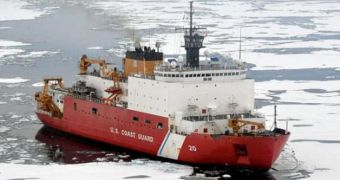Researchers at the American space agency are finally ready to embark on the second leg of an essential study, which will help them gain a deeper insight into how world's ices are faring at this time. The ICESCAPE mission is one of the most important endeavors in this regard.
Study the way in which Arctic Ocean waters change is the primary focus of the effort, whose acronym stands for Impacts of Climate on Ecosystems and Chemistry of the Arctic Pacific Environment.
After the first part of the work was successfully completed, researchers took a few days off, but they will return to work starting Saturday, June 25. Scientists' main focus will be on the Chukchi and Beaufort Seas.
These areas are located along Alaska's western and northern coasts. They are believed to be extremely relevant to the matter at hand. Understanding how global warming and climate change influence the world around us is critical for learning how to mitigate the effects.
Melting glaciers, ice caps and tundras are all contributing to changing the planet's climate. But these shifts need a little bit of time to take hold, and experts need to monitor them during these critical times.
But the researchers are also focusing on other aspects of the ocean as well. They are for example interested in learning how phytoplankton blooms contribute to circulating various essential chemicals through the waters.
“Last year, ICESCAPE nailed down quite a few things in terms of the phytoplankton work. We know pretty well now how fast they are growing and what they are responding to,” explains Kevin Arrigo.
“The repeat measurements from this voyage will help us confirm what's going on,” adds the expert, who is the chief scientist for ICESCAPE. He is based at the Stanford University in Palo Alto, Caifornia, Space reports.
“With this year's voyage, we hope to acquire more details about the physical processes pulling nutrients from deep water to the surface,” he goes on to say. These processes are essential towards understanding how the ocean itself functions.
For this year's measurements, experts decided to start the investigation two weeks later than in other years. This unfortunately means a lower chance of finding thick ice, which means that the team's icebreaker will be able to move further within previously unaccessible ecosystems.

 14 DAY TRIAL //
14 DAY TRIAL //